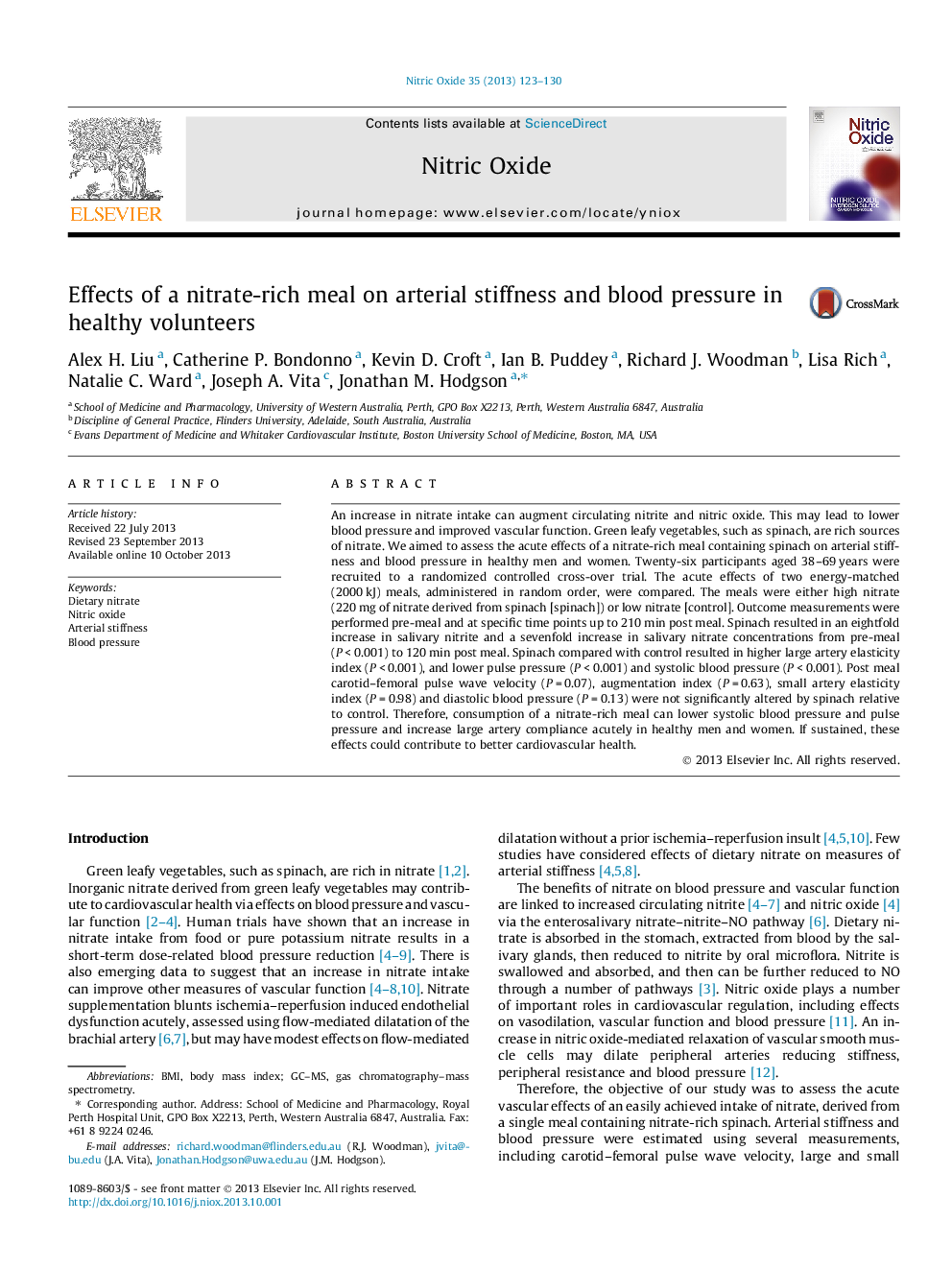| Article ID | Journal | Published Year | Pages | File Type |
|---|---|---|---|---|
| 8345970 | Nitric Oxide | 2013 | 8 Pages |
Abstract
An increase in nitrate intake can augment circulating nitrite and nitric oxide. This may lead to lower blood pressure and improved vascular function. Green leafy vegetables, such as spinach, are rich sources of nitrate. We aimed to assess the acute effects of a nitrate-rich meal containing spinach on arterial stiffness and blood pressure in healthy men and women. Twenty-six participants aged 38-69Â years were recruited to a randomized controlled cross-over trial. The acute effects of two energy-matched (2000Â kJ) meals, administered in random order, were compared. The meals were either high nitrate (220Â mg of nitrate derived from spinach [spinach]) or low nitrate [control]. Outcome measurements were performed pre-meal and at specific time points up to 210Â min post meal. Spinach resulted in an eightfold increase in salivary nitrite and a sevenfold increase in salivary nitrate concentrations from pre-meal (PÂ <Â 0.001) to 120Â min post meal. Spinach compared with control resulted in higher large artery elasticity index (PÂ <Â 0.001), and lower pulse pressure (PÂ <Â 0.001) and systolic blood pressure (PÂ <Â 0.001). Post meal carotid-femoral pulse wave velocity (PÂ =Â 0.07), augmentation index (PÂ =Â 0.63), small artery elasticity index (PÂ =Â 0.98) and diastolic blood pressure (PÂ =Â 0.13) were not significantly altered by spinach relative to control. Therefore, consumption of a nitrate-rich meal can lower systolic blood pressure and pulse pressure and increase large artery compliance acutely in healthy men and women. If sustained, these effects could contribute to better cardiovascular health.
Keywords
Related Topics
Life Sciences
Biochemistry, Genetics and Molecular Biology
Biochemistry
Authors
Alex H. Liu, Catherine P. Bondonno, Kevin D. Croft, Ian B. Puddey, Richard J. Woodman, Lisa Rich, Natalie C. Ward, Joseph A. Vita, Jonathan M. Hodgson,
